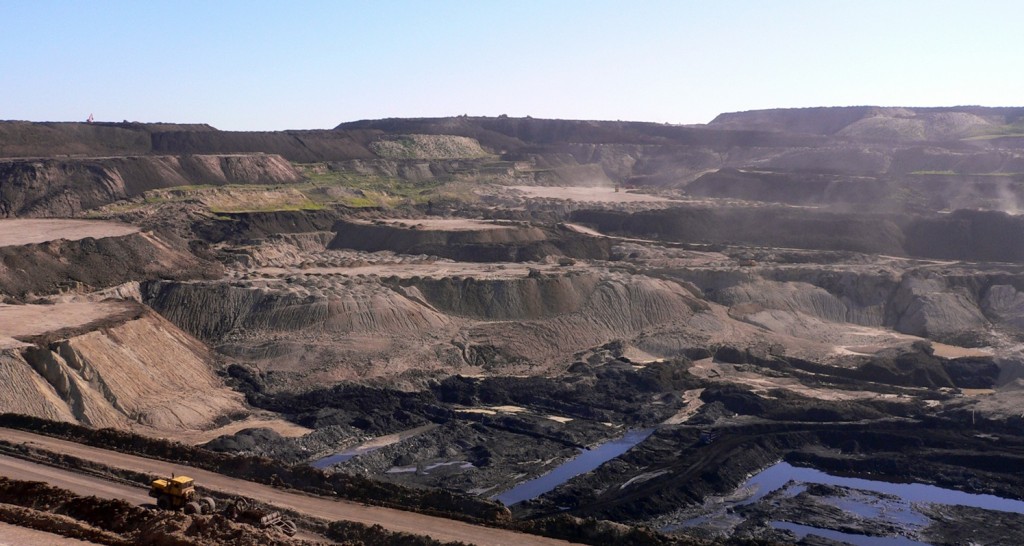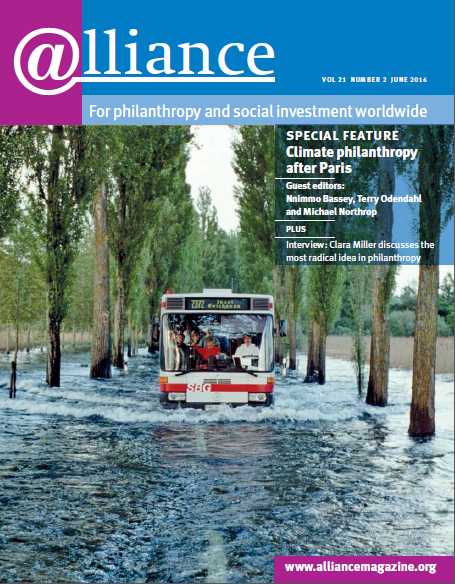While a diplomatic triumph, the Paris Agreement must overcome major challenges in its implementation. With the International Energy Agency estimating $15 trillion of investments required to meet the targets agreed, the philanthropic sector can play a crucial role in mobilizing finance for success, divesting its own assets from fossil fuels and investing in new and existing sustainable energy sources, while promoting robust capital markets which can deliver an economy geared to preventing dangerous climate change.
Philanthropic organizations can encourage the rebalancing of capital markets to take account of climate risk. The arguments are clear: to limit the disastrous effects of global warming, two-thirds of listed fossil fuel resources are effectively ‘unburnable’ and must stay in the ground. Much-needed climate policies and technological advances will leave these resources ‘stranded’, meaning the world’s stock markets and pension funds are effectively sitting on what the independent financial think-tank Carbon Tracker coined ‘a carbon bubble’.[1] Simply put, fossil fuels represent risky investments. Holly: please leave out footnote in pull quote.
‘The world’s stock markets and pension funds are effectively sitting on what the independent financial think-tank Carbon Tracker coined “a carbon bubble”. Simply put, fossil fuels represent risky investments.’
Philanthropy made a crucial intervention in climate research by enabling Carbon Tracker to link the concept of a ‘carbon budget’ to capital markets, funding research the mainstream was unwilling to engage in. Turning an abstract scientific concept into precise numbers for financial analysts to evaluate had the effect of bringing investors and shareholders into the climate challenge. Within four years of Carbon Tracker’s first report, Mark Carney, governor of the Bank of England, was warning of the financial risks of climate change. Meanwhile, the G20’s Financial Stability Board has begun to draw up guidelines on how companies and asset holders should ‘stress test’ their investments against different climate scenarios and publicly disclose their risks.

Coal mine in Mongolia. To limit the disastrous effects of global warming, two-thirds of listed fossil fuel resources must stay in the ground.
As well as engaging investors and regulators, the philanthropically funded research also helped to trigger a powerful social movement in favour of divestment. In the same four years, over $3.4 trillion has been pledged to fossil fuel divestment, by groups as diverse as the Norwegian Sovereign Wealth Fund, AXA and Storebrand.
Foundations have been essential to the process, representing a quarter of the total divestment commitments.[2] Undoubtedly, actors in the philanthropic sector are ideally placed to leverage their financial clout and strong networks to achieve meaningful change. In Europe, for example, the Ashden and Mark Leonard Trusts have galvanized over 30 foundations worth over $8 billion to divest. Moreover, the argument that divestment is ineffective because there will always be buyers for the divested stock is quickly losing ground – the Bank of England has admitted investors shunning fossil fuels could be one of the drivers of the oil price slump.[3]
‘But divestment alone is not enough. It must be accompanied by a steady stream of investment into low-carbon technology.’
But divestment alone is not enough. It must be accompanied by a steady stream of investment into low-carbon technology. Not just into R&D for an ‘energy miracle’, but also into the deployment of currently available technologies and best practices. As we speak, developing countries are making key choices that could lock in high-carbon infrastructure for decades. Low- or zero-interest loans can leverage finance by a factor of 50,[4] and there is no shortage of innovative scalable products to invest in. The Global Innovation Lab for Climate Finance offers examples, from water financing to hedging against currency risks for climate projects.
Clearly, there is growing interest in the conversion of national commitments – Intended Nationally Determined Contributions (INDCs), agreed in Paris – into targeted investment. The Call to Action on Climate Finance, another philanthropically funded group of global climate finance and responsible investing organizations, has put forward a three-point framework of measures to encourage long-term capital allocation from financial markets alongside public finance.[5]
Post Paris, there is growing momentum for green finance. The philanthropic sector has been at the forefront in aligning values and investing, and must continue to lead the way.
Mark Campanale is founder and executive director of the Carbon Tracker Initiative. Email mark@carbontracker.org
Iancu Daramus is communications and engagement associate of the Carbon Tracker Initiative. Email idaramus@carbontracker.org






Comments (0)